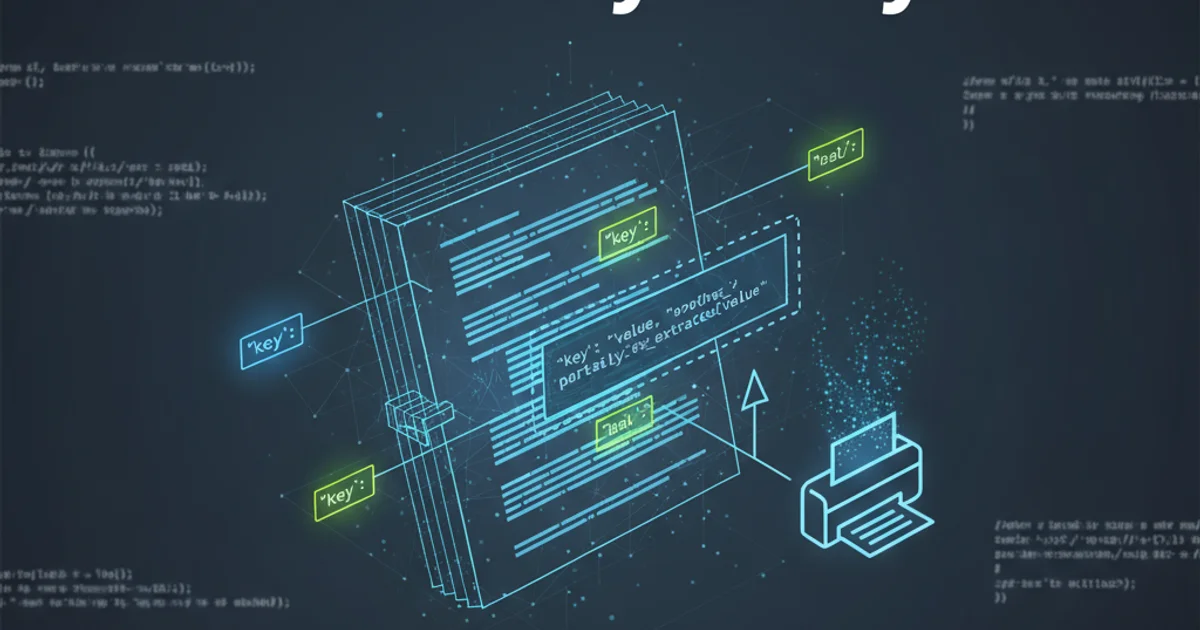Printing part of a dictionary entry?
Categories:
Efficiently Printing Specific Parts of Python Dictionary Entries

Learn various Python techniques to extract and print only the desired portions of dictionary entries, from simple key access to complex nested structures.
Python dictionaries are versatile data structures for storing key-value pairs. Often, you don't need to print an entire dictionary or even a full entry. This article explores practical methods to selectively print specific parts of dictionary entries, enhancing readability and focusing on relevant information. We'll cover basic access, iterating through items, and handling nested dictionaries.
Basic Access and Printing Specific Values
The most straightforward way to print a specific part of a dictionary entry is by directly accessing its value using the key. If you know the key, you can retrieve its associated value and print it. This is fundamental for working with dictionaries.
my_dict = {
'name': 'Alice',
'age': 30,
'city': 'New York'
}
# Print only the 'name'
print(my_dict['name'])
# Print 'name' and 'city'
print(f"Name: {my_dict['name']}, City: {my_dict['city']}")
Accessing and printing specific values from a dictionary.
dict.get(key, default_value) instead of dict[key] when there's a possibility the key might not exist. This prevents KeyError and allows you to provide a fallback value.Iterating and Filtering Dictionary Items
When you need to process multiple entries or apply conditions, iterating through dictionary items (keys, values, or both) becomes essential. You can use loops to check conditions and print only the parts that meet your criteria. This is particularly useful for larger dictionaries or when you need to dynamically decide what to print.
students = {
'id_001': {'name': 'Bob', 'grade': 'A', 'major': 'CS'},
'id_002': {'name': 'Charlie', 'grade': 'B', 'major': 'EE'},
'id_003': {'name': 'David', 'grade': 'A', 'major': 'Math'}
}
print("Students with grade 'A':")
for student_id, details in students.items():
if details['grade'] == 'A':
print(f" ID: {student_id}, Name: {details['name']}")
Iterating through a dictionary to print specific parts of entries based on a condition.
flowchart TD
A[Start]
B{Iterate through dictionary items}
C{Check condition for current item?}
D[Extract and print desired parts]
E[Continue iteration?]
F[End]
A --> B
B --> C
C -- Yes --> D
D --> E
C -- No --> E
E -- Yes --> B
E -- No --> FFlowchart for iterating and conditionally printing dictionary parts.
Handling Nested Dictionaries and Complex Structures
Dictionaries can contain other dictionaries, creating nested structures. Accessing parts of these nested entries requires chaining key lookups. This approach allows you to drill down into the data to retrieve precisely what you need, no matter how deeply it's embedded.
company_data = {
'departments': {
'HR': {'employees': 50, 'location': 'Floor 1'},
'Engineering': {'employees': 120, 'location': 'Floor 3', 'teams': {'frontend': 60, 'backend': 60}}
},
'CEO': 'Jane Doe'
}
# Print the number of employees in HR
print(f"HR Employees: {company_data['departments']['HR']['employees']}")
# Print the number of backend engineers
print(f"Backend Engineers: {company_data['departments']['Engineering']['teams']['backend']}")
Accessing and printing parts of a nested dictionary.
KeyError if any intermediate key is missing. Consider using a helper function with dict.get() or try-except blocks for robust error handling.